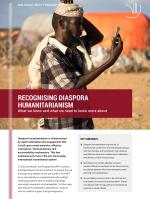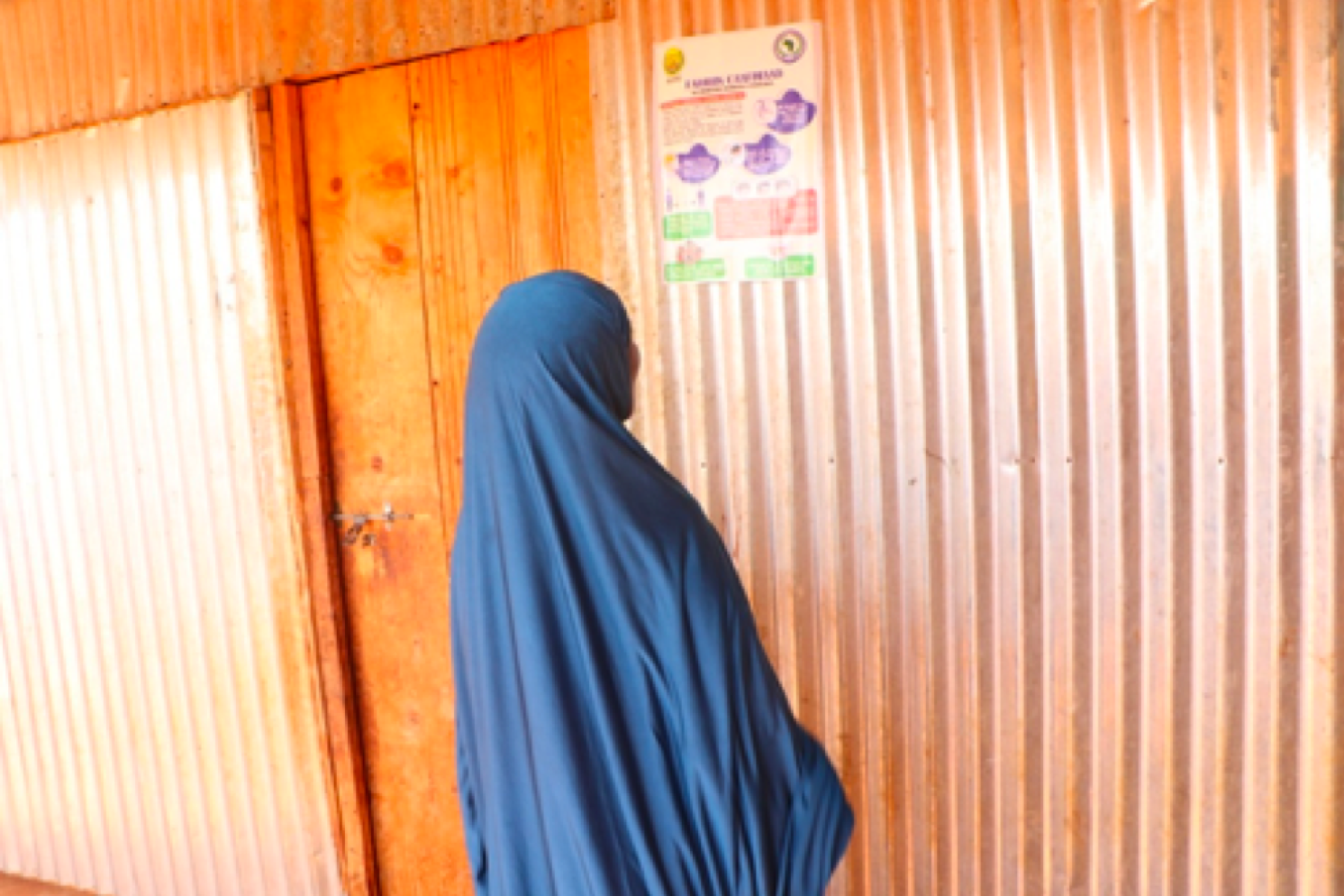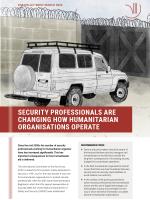Security professionals are changing how humanitarian organisations operate
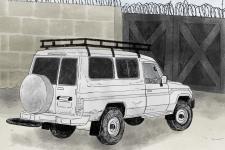
- Donors and policymakers should be aware of the tensions between security managers and humanitarians in the field and consider the long-term consequences of increasing security budgets for humanitarian operations.
- In the field, humanitarian organisations should ensure that there are clear boundaries between security and non-security responsibilities, to avoid clashes over authority.
- In the context of the growing proximity between security professionals and humanitarian actors and the use of digital technologies, we need greater scrutiny and oversight over the way in which sensitive information circulates beyond humanitarian organisations.
The International Committee of the Red Cross (ICRC) created the first position solely dedicated to security in 1991, but for the next decade it was rare for humanitarian organisations to embed security professionals. After the 2003 Canal Hotel bombing in Baghdad in which the UN’s special representative in Iraq was killed, the United Nations Department of Safety and Security (UNDSS) was established.
However, attacks on aid workers increased throughout the 2000s in countries such as Afghanistan, Iraq and Somalia. Humanitarian organisations invested more in their security in response to these threats, as well as changing norms around humanitarian liability. In 2015, in a landmark ruling, an aid worker successfully sued the Norwegian Refugee Council (NRC) for gross negligence. In response, donors implemented increasingly stringent insurance protocols, and the demand for humanitarian security professionals continued to grow.
Today, virtually every international humanitarian organisation operating in an insecure region employs an international security professional, typically from a western military, police or private security background. Insights from long-term fieldwork with security contractors and aid workers in Sub-Saharan Africa (including Somalia, Kenya, South Sudan and Tanzania) shows that this has resulted in friction between the two groups, especially in relation to access and liability.
In recent years, several developments have streng- thened the authority of security professionals over humanitarian staff. First, digital technologies have been increasingly used for information gathering, monitoring of staff and remote management. Second, as humanitarian security has become more structured and coordinated, new international organisations have emerged whose sole purpose is to provide security services to humanitarian clients. Whilst sometimes registered as non-profits, their function is not dissimilar to commercial private security companies, raising important questions about how the information they gather may be used beyond humanitarian purposes.
The logic of security in humanitarian operations can be fundamentally different from the security professional and aid worker’s respective viewpoints.
Friction in the field
The growing influence of security professionals has caused tensions in the field. A common complaint from aid workers is that security professionals bring an ‘Afghanistan and Iraq mentality’, forcing humanitarian organisations to adopt overly risk-averse or militarised security procedures, such as restrictive curfews and having to move around in armoured vehicles or with armed guards. These tensions are most acute regarding humanitarian access. Many, especially more seasoned aid workers, favour an approach based on community consent — building long-term relationships with community members to ensure safe access. They emphasise flexibility over procedure, relying on self-analysis of the environment rather than deferring to security protocol. Moreover, they at times question the accuracy of security managers’ information, citing examples of duplicated ‘copy and paste’ risk reporting.
By contrast, security managers argue that aid workers are not trained to understand security and often dismiss it as a tick-box exercise. They point out that many humanitarians spend only a short while in any given location, and are naïve to the risks, whereas some security professionals may spend years working in the same environment. In short, the logic of security in humanitarian operations can be fundamentally different from the security professional and aid worker’s respective viewpoints. This can lead to frequent struggles over authority.
Security technologies
The growing use of digital technologies can further exacerbate these frictions and create new issues. Expanding internet connectivity, even in remote and dangerous areas, means that platforms such as Skype and WhatsApp are now an essential part of the everyday infrastructure of humanitarian security. Some larger humanitarian organisations are also experimenting with artificial intelligence (AI).
These technologies promise to increase the information gathering capabilities used to inform security decisions. However, both aid workers and security managers admit that these proliferating communication platforms can also become a source of rumour and misinformation. There is a tendency for speculation and to amplify the most radical, ‘worst-case’ scenarios. Moreover, whilst more incidents may be reported, the wider context to these incidents is often missing, as this relies on building long-term relationships with trusted informants.
These technologies also enable remote management by security experts. They can be used to monitor staff, and to justify increased security measures. Digital technologies can therefore reinforce ‘bunkerisation’: the tendency for international humanitarian staff to stay within securitised compounds and capital cities instead of going to ‘deep’ field sites. In turn, this transfers risk onto local-national staff and can deepen the divide between them and expatriate humanitarian staff.
New humanitarian-security organisations
As humanitarian security has become more professionalised, structured and coordinated, several global platforms have emerged whose sole purpose is to provide security for humanitarian organisations. They provide a range of services including a 24/7 threat warning service, SMS alerts, quantitative data mapping and analysis, crisis assistance and humanitarian training.
Two of the largest of these platforms are the International NGO Security Organisation and Partner Liaison Security Organisation. The former registered as a charity in 2011 in order to consolidate different humanitarian security programs into a single ‘globally-coordinated mechanism’. It has expanded across the Middle East, Africa and Eastern Europe, with over 800 subscribed NGOs. The latter is another membership-based platform but is funded by USAID and only provides security services to overseas US-affiliated NGOs and subcontractors.
Whilst many humanitarians benefit from these services, there are still strong critics. These platforms operate in the same conflict-prone areas, which can lead to both competition and repetition. For example, in South Sudan alone, there are three such humanitarian security platforms active. In this context, some humanitarians complain of an overload of information, and of information becoming more reactive than analytical — events may be recorded, but there is little understanding of why they occurred. Moreover, because these new entities have an interest in monopolising information, pre-existing informal networks of communication based on trust between humanitarian organisations and other actors may be weakened.
Whilst humanitarian organisations feed much of the information into these platforms, there is sometimes mistrust over their intentions. For example, the contract to implement the Partner Liaison Security Organisation in Kenya was previously awarded to a private security company, who effectively gained the privilege to gather sensitive political, economic and security information about areas of emerging commercial interest through a pre-existing network of humanitarian actors. This raises questions about how security information gathered for humanitarian purposes might be used by private security actors for commercial purposes. It also potentially threatens the impartiality and neutrality of humanitarian organisations.
Moving forward
The employment of security professionals in humanitarian operations is now a firmly entrenched practice that shows little sign of changing. As such, it is even more important to evaluate the potentially negative consequences of this development. Donors and INGOs should be aware of the tensions between security managers and humanitarians in the field and consider the long-term consequences of increasing security budgets for humanitarian operations. On the ground, humanitarian organisations should ensure there are clear boundaries between security and non-security responsibilities, to avoid clashes over authority. Finally, in the context of the growing proximity between security professionals and humanitarian actors and the use of digital technologies, we need greater scrutiny and oversight over the way in which sensitive information circulates beyond humanitarian organisations.
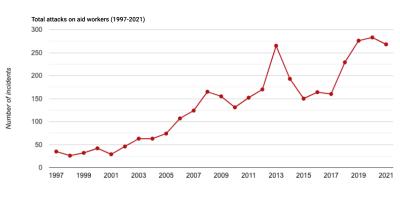
The top illustration in this brief has been edited since the brief was first published in February 2023.
DIIS Eksperter

